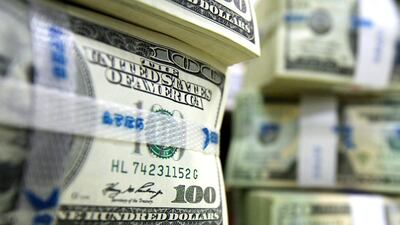The US dollar bounced back across the board in July after tumbling against all the major currencies in June, except the Norwegian krone.
The US dollar fought back, rising by an average of more than 1.2 per cent against these currencies. The biggest gains were against the New Zealand dollar with a gain of more than 3.1 per cent, the Swedish krona at 2.9 per cent and the Canadian dollar at 2.5 per cent. Meanwhile, the Japanese yen declined by 1.2 per cent.
The US dollar came close to posting its fourth consecutive weekly gain, which is the longest winning streak in more than 17 months. However, US dollar bulls are near a critical test level at 82.51, which should be watched carefully.
The rise in the US dollar was supported by further expectations for a shift in monetary policy from tapering to tightening in the US. However, as wage growth disappoints, recent jobs numbers eased these estimates. This led the bulls to back off for a while.
All market watchers are currently focused on the US second-quarter GDP (second estimation). The recent trade deficit data suggests a stronger growth. However, looking deeper into the numbers, it is clear that the 7 per cent decline in the trade deficit is driven by declining petroleum imports, which fell to record lows. Therefore, a revision is likely for the July figures.
When compared to recent historical standards, market volatility remains very low. In their search for higher yields a number of investors are diversifying more of their investments into stock markets. However, as global tensions harm equities across the world volatility in the foreign exchange market is increasing and is expected to get back to normal levels in the next few weeks.
As long as tensions escalate, equities are likely to continue with the current correction path, and investors are likely to shift back to safe haven assets and currencies such as gold, silver, Swiss franc and yen.
Looking at energy prices, crude oil is at a crossroad now. Global tensions support higher prices but the growth outlook is still negative.
Eurozone countries are beginning to see consequences from the sanctions that they have imposed on Russia. They will soon face more trouble because Russian sanctions have a greater impact on the west than that of western sanctions on Russia. This is why crude oil is at a crossroad; further international uncertainty is likely to support oil, while any change in the change in the global growth outlook will be the catalyst for lower prices. In all cases, sanctions will have a great impact on all parties.
Nour Al Hammoury is the chief market strategist at ADS Securities
Follow The National's Business section on Twitter

